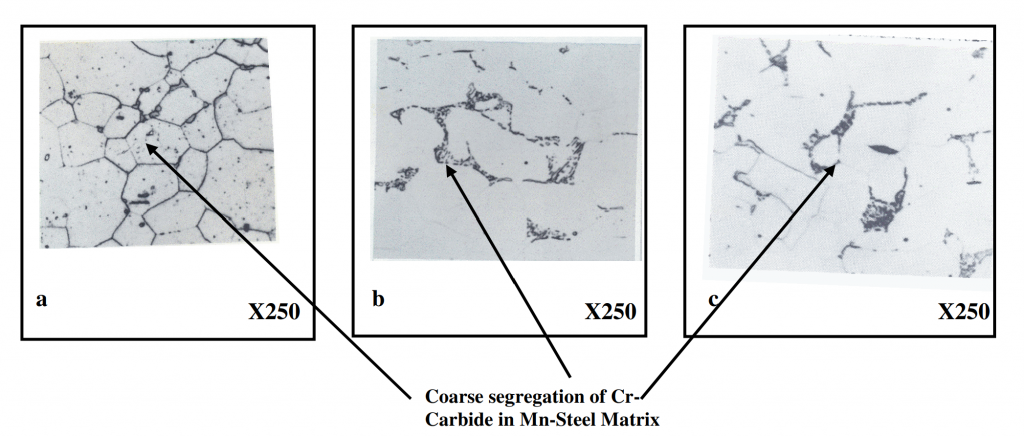In the as-cast condition, AMS contains carbides and embritting transformation product. A full solution treatment can be obtained between 1000oC and 1100oC with soak times appropriate for the section thickness of the part. Higher solution treatment temperature (STT) should be avoided because carbon segregation may cause incipient melting, and scaling and decarburization may occur. Moreover, commercial quenching rates limit carbon concentrations retained in solution. Although some grain growth may occur during solutioning, it is the pour temperature and solidification rate that strongly influence the final austenitic grain size.
Carbides form in castings that are cooled slowly in the molds. Regardless of mold cooling rates, carbides are formed when the as-cast contains more than 1.0 % C. They form in heavy section castings during heat treatment if quenching is ineffective in producing rapid cooling throughout the entire section thickness. Carbides can form during service at temperatures above about 275oC.
Heat treatment involving solution annealing and quenching in water can enhance yield strength and abrasion resistance. However, as the section size of manganese steel increases, tensile strength and ductility decrease substantially in heat treated castings. This occurs because heavy sections do not solidify in the mold fast enough to prevent coarse grain size. This condition can not be altered by heat treatment. At a given temperature and grain size, nickel and manganese additions are beneficial for enhancing impact strength, while higher carbon and chromium levels are not.
